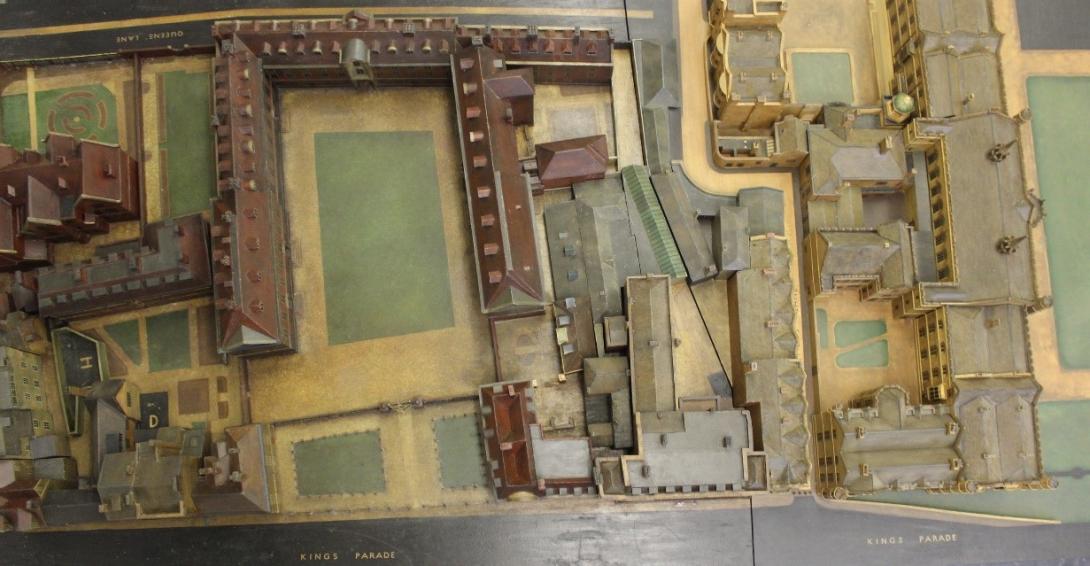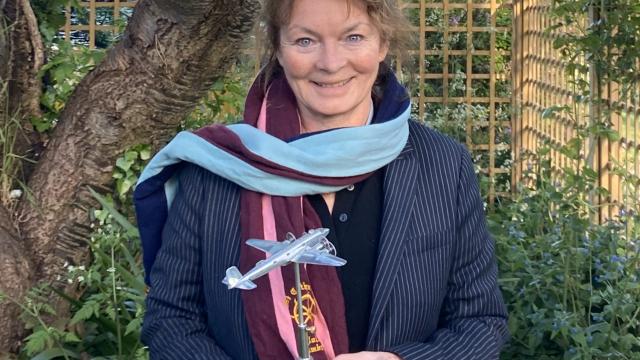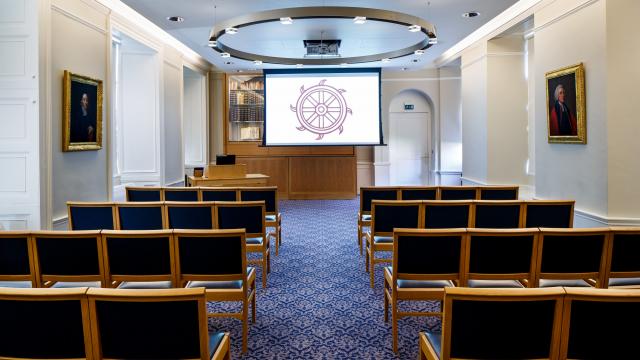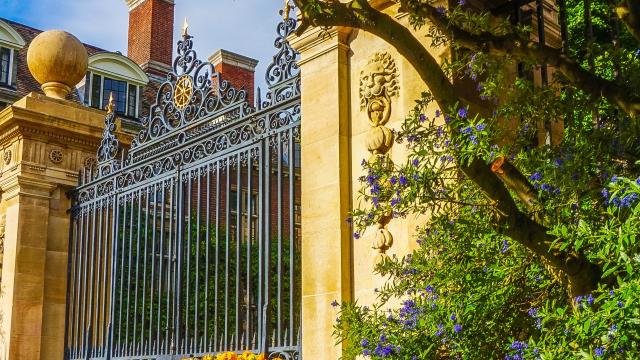Architectural model by H. S. Manning
Wood, paper and paint
Created 1940
Acquired by St Catharine’s 1940
In March 1940, senior members of St Catharine’s met with John Maynard Keynes (in his capacity as First Bursar of King’s College) and Professor Albert Richardson from the Bartlett School of Architecture, which was evacuated to St Catharine’s during the Second World War. The purpose of the meeting was to reconsider the boundary between the two colleges and following discussions all parties agreed that Professor Richardson would have a model made to assist further consideration of the matter. He commissioned the Bedford-based firm H. S. Manning, consulting decorative artist, to make the model. Archival material indicates that it was completed by October 1940 at a substantial cost of £300, which was shared by King’s and St Catharine’s.
In 2021, the College was proud to announce the results of weeks of research and conservation work the model, completed in partnership with the Cambridge Colleges’ Conservation Consortium (CCCC).
The research phase of work allowed the College to piece together the numerous wooden blocks, matching them with their associated space on the model’s base. The Deputy Librarian consulted maps and photographs from the St Catharine’s Archive which aided reconstruction of the buildings that are no longer familiar today. It quickly became clear that the base for the King’s College buildings was missing and it was fortunate to discover that photographs of the King’s part, taken at the time of the model’s creation, were held in the King’s College Archive. These were kindly shared by the Archivist at King’s, enabling the buildings to be correctly reassembled. As the model took shape, it revealed what the College’s Island site looked like in 1940, and also that several buildings across the model were lost.
Watch a short lecture about the research completed before the model underwent conservation:
Jessica Phipps Wardle, Conservator, was part of the team involved in the next phase of activity:
“Once we took a closer look at the state of the varnish and the damage from wood worm and water, it became clear that we would need to draw on many of our specialist skills. Surface cleaning, stabilising damaged areas and removing the bloom from the varnish allowed us to step back and identify what other work was needed. We then addressed damaged or missing details like the grass for Main Court, which we created on paper so it can be easily removed. The learnings from conserving the model will undoubtedly be instructive and useful for future projects.”







